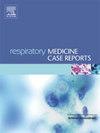间质性肺疾病对酸性鞘磷脂酶缺乏症(ASMD)患者的影响-一个病例系列
IF 0.7
Q4 RESPIRATORY SYSTEM
引用次数: 0
摘要
背景:溶酶体贮积病(LSD)是由编码溶酶体酶功能的基因突变引起的遗传性疾病。酸性鞘磷脂酶缺乏症(ASMD)是一种极其罕见、进行性且通常致命的LSD,估计患病率为1 / 50,000 - 250,000。PrevASMD研究确定西班牙的ASMD患病率为35例。几乎所有患者都表现为无症状间质性肺病(ILD),因为90%的慢性内脏性ASMD患者有ILD的影像学证据。目的本病例系列旨在强调ASMD在成人和儿童ILD患者中的重要性,并强调考虑肺部累及是ASMD多系统表现的关键特征。方法本病例系列描述了西班牙7例成人和儿童ASMD病例。均表现为肺功能损害。收集了临床表现、诊断检查、肺功能检查、影像学检查和随访期间患者结果的数据。结果ASMD的鞘磷脂蓄积可导致脾、肝、肺、骨髓、淋巴结等多系统病变。几乎所有患者都表现为无症状ILD,但并非所有患者都表现出呼吸道症状,也并非所有患者都转诊到肺科医生那里。定期评估包括肺功能测试(强制肺活量和一氧化碳扩散能力)、氧饱和度和运动耐量测试。结论asmd患者有不同的受累靶器官,其中肺受累对患者的发病-死亡率有显著影响。因此,治疗ILD的肺科医生对ASMD的诊断怀疑至关重要,因为多学科监测ILD作为ASMD的一个特征可以确保其正确的管理和随访。本文章由计算机程序翻译,如有差异,请以英文原文为准。
The impact of interstitial lung disease in patients with acid sphingomyelinase deficiency (ASMD) - A case series
Background
Lysosomal storage diseases (LSD) are inherited diseases caused by mutations affecting genes encoding the function of lysosomal enzymes. Acid sphingomyelinase deficiency (ASMD) is an ultra-rare, progressive, and often fatal LSD with an estimated prevalence of 1-in-50,000–250,000 individuals. The PrevASMD study established the ASMD prevalence in Spain at 35 patients. Almost all present asymptomatic interstitial lung disease (ILD), since >90 % patients with chronic visceral ASMD have radiographic evidence of ILD.
Objective
This case series aims to emphasize the importance of ASMD in adult and pediatric patients with ILD, and to underline the consideration of pulmonary involvement as a key feature of the multisystemic manifestation of ASMD.
Methods
This case series describes seven adult and pediatric cases of ASMD in Spain. All presented with pulmonary function impairment. Data were collected on clinical presentation, diagnostic workup, pulmonary function tests, imaging studies, and patient outcomes during follow up.
Results
Sphingomyelin accumulation in ASMD leads to multi-systemic disease involving spleen, liver, lungs, bone marrow, and lymph nodes. Almost all patients presented with asymptomatic ILD, but not all of them exhibited respiratory symptoms and not all were referred to pulmonologists. Periodic assessments included pulmonary function testing (forced vital capacity and diffusing capacity for carbon monoxide), O2 saturation, and exercise tolerance testing.
Conclusion
ASMD patients presented with different target organ involvement, with lung involvement contributing significantly to patient morbi-mortality. ASMD diagnostic suspicion among pulmonologists treating ILD is thus crucial, as multidisciplinary monitoring of ILD as a feature of ASMD can ensure its correct management and follow-up.
求助全文
通过发布文献求助,成功后即可免费获取论文全文。
去求助
来源期刊

Respiratory Medicine Case Reports
RESPIRATORY SYSTEM-
CiteScore
2.10
自引率
0.00%
发文量
213
审稿时长
87 days
 求助内容:
求助内容: 应助结果提醒方式:
应助结果提醒方式:


